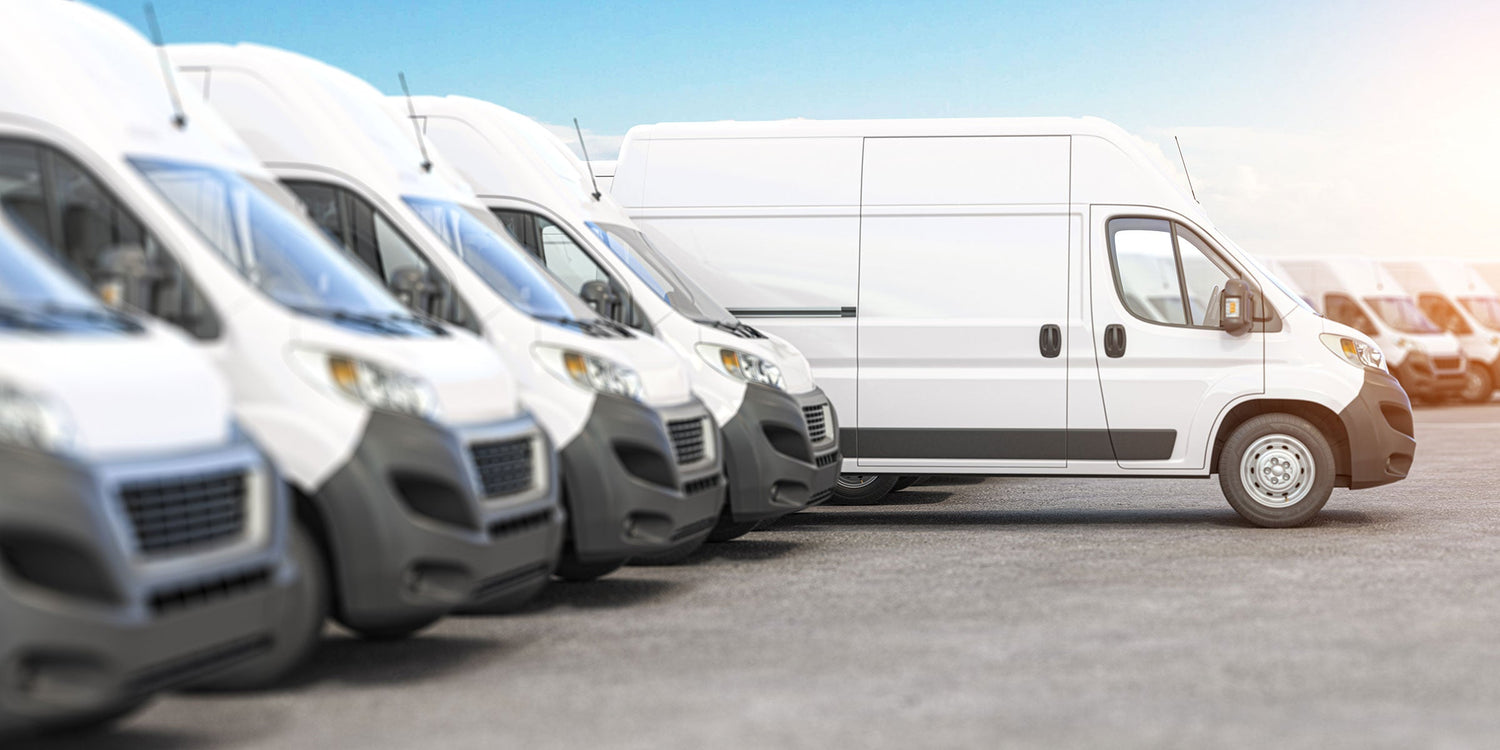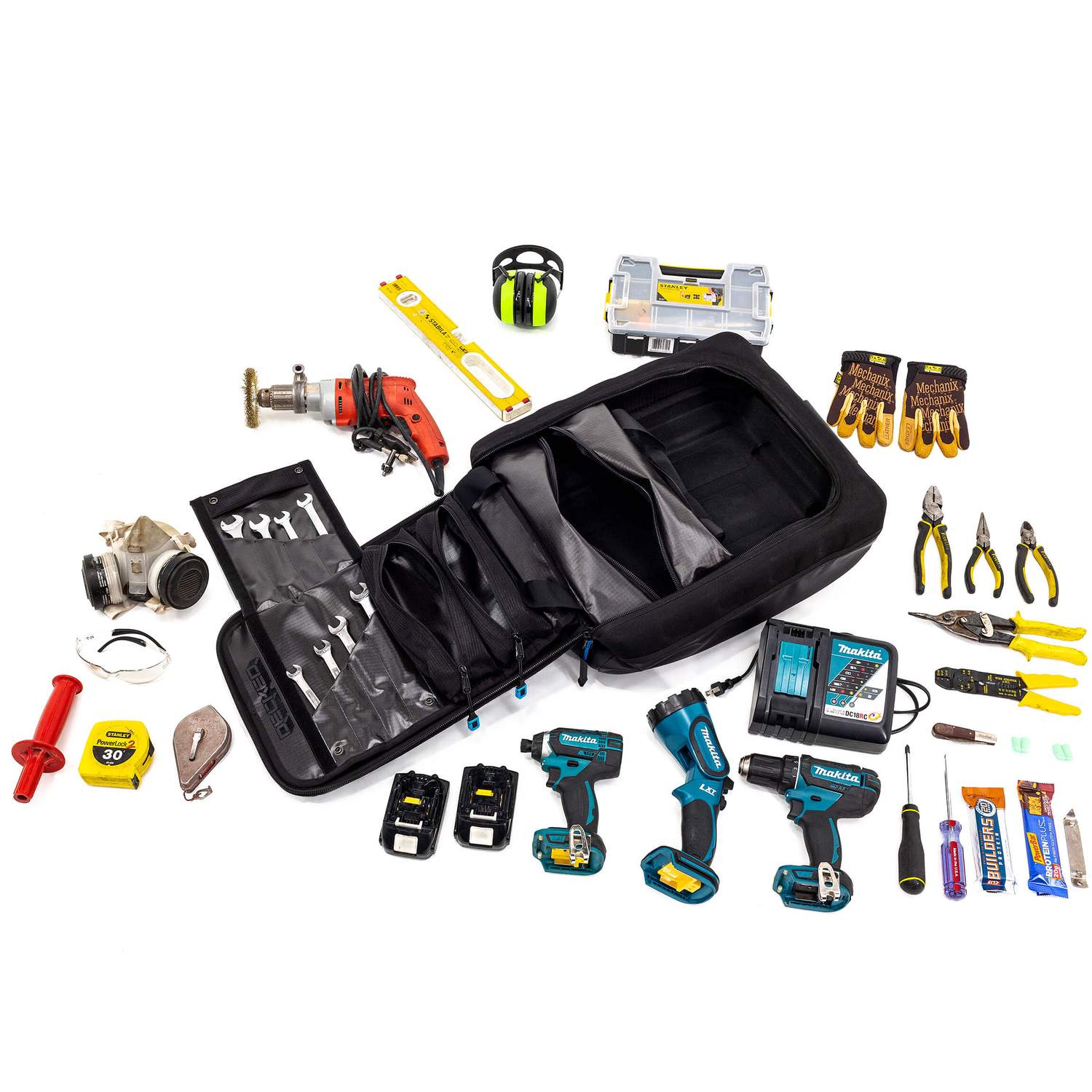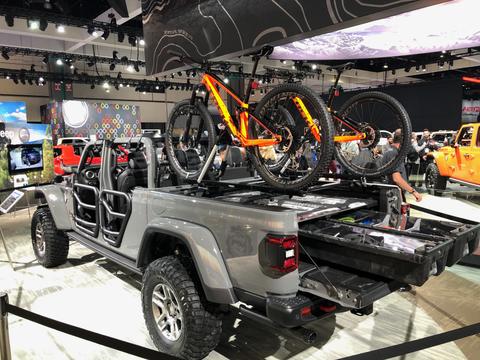With shifting trends and constantly moving parts, minimizing the total cost of ownership for your fleet and its assets can be challenging. The total cost of ownership, or TCO, is the purchase price of an asset, plus all maintenance and operating costs over the asset’s lifespan. This includes, but is not limited to, an asset’s:
- Acquisition costs
- Standard operating costs
- Resource costs
The task of managing every variable and lowering that bottom line is daunting. Every fleet manager is looking to cut these costs in a way that brings their organization the most value without having to jeopardize its quality of service and operations.
While it may be challenging, it’s not impossible. In this article, we will examine why minimizing your TCO is important by reviewing some of its benefits. We’ll also take a look at calculating the total cost of fleet ownership, provide tips on how to minimize your total costs, and strategize on how to improve your fleet’s asset longevity. Here’s what we’ll be taking a deeper dive into:
- Benefits of Minimizing Your Fleet’s Total Cost of Ownership
- How to Calculate the Total Cost of Ownership
- Ways to Minimize the Total Cost of Ownership
- 5 Tips to Improve Asset Longevity
Benefits of Minimizing Your Fleet’s Total Cost of Ownership
- Save money and evaluate your return on investments. Minimizing a fleet’s total cost of ownership can not only obviously save money, but can help businesses better inform their financial and operational decisions. Analyzing your fleet’s TCO enables you to evaluate your return on investments and examine any one asset’s economic impact. Businesses can determine the money-savings between a short-term and long-term cost and thus identify better values in the long run. This allows fleet managers to make more informed decisions that can ultimately lead to even more budget-saving outcomes.
- Maximize all available resources and lessen your environmental impact. As a result of minimizing your fleet’s total cost of ownership, you may find that you are replacing fuel-heavy fleet vehicles or scrapping the vehicle and replacing parts with more efficient alternatives. You might also discover your team utilizing all other available resources already in your fleet’s possession, reducing the need to purchase additional supplies.
- Redirect or disburse funds to other areas of need in your business. Money saved from minimizing your total cost of ownership could be redirected. You might invest more into employee perks such as ergonomic gear. Perhaps you prefer to redirect the funds to developing and implementing a new training program. Whatever it may be, minimizing the TCO can help redirect funds to supplement or create a more robust area of your fleet.
- Earn recognition as an exceptional fleet manager. Fleet managers that minimize their TCO can use extra funds to buy things for their team! This is an opportunity to provide workers with gear that makes them more efficient while reducing the number of complaints you get. Fleet managers can become thought leaders and heroes in their organization if they’re able to spend money on taking care of their employees and spend extra funds on actual things they want. Minimizing the TCO provides the perfect opportunity to reward your hard-working drivers and employees with DECKED goods.
How To Calculate the Total Cost of Ownership

The actual total cost of ownership is a little more complicated than just vehicle or asset cost. It includes maintenance, depreciation, and indirect costs such as interest rates on financed payments. Those are just some of the factors that go into the overall equation. For a better idea, here’s how to get a general cost assessment. The formula for calculating the total cost of ownership is:
I + M + O – R = TCO
Where the variables are:
- I = Initial cost
- M = Maintenance costs
- O = Operational costs
- R = Remaining value after depreciation
While these are the significant parts of a TCO equation, some other variables are at play here: Consider how much it costs when a vehicle or asset is not in use. Any vehicle or asset not in service is still depreciating in its downtime. One article revealed that downtime for a single asset could range from 400 to 800 nonproductive hours annually. It was then estimated that the annual cost of this downtime ranges from $1,560 to $3,120.
Ultimately, everything you’re not actively utilizing can still take a significant portion out of your operating budget. These are funds that can be better used and disbursed to other business goals.
Overall, TCO calculation doesn’t have to be a complex math problem, but it is an integral part of working out an investment’s profitability. Let’s take a more in-depth look at these and how to actually minimize them.
Ways to Minimize the Total Cost of Ownership
Maintaining a fleet is an expensive proposition. It requires executive decision-making, financial wherewithal, and even some ingenious innovation to minimize the TCO successfully. Here are some things to consider to get the most out of your budget and capital.
Finance, Lease, or Purchase Outright?
Study all your payment options and be confident in the one you choose. The option you select can either save you loads of money or prove to be a poor investment. Vehicle and asset financing and leasing options vary, and your fleet size may affect your purchase power. There are tons of variables like these in every deal; just make sure you buy when the time is right and when you’ve done enough research.
Upgrades and Upfits
We asked Alex May, Senior Fleet Manager from Rollins, Inc., about controlling costs. He told us, “My job is mitigating costs. I can control the cost of the upfit. More storage and access for less money is the best way I can control my costs.”
The DECKED Drawer System is just one way to control your costs when it comes to modular storage and convenient access to all gear. DECKED can help you reduce your TCO because DECKED drawers:
- Weigh around 200lbs which is approximately 400lbs less than other options, saving you fuel.
- Don’t rust or dent like many metal boxes, saving you money and the need to replace them.
- Can often be removed and added to your next batch of trucks or vans.
- Reduce the number of tools lost to theft, loss, or damage.
- Eliminate the need to drill into the truck bed, preserving your truck’s value.
Our drawers not only help fleet managers with their storage and access problems, but also provides top-notch security to help protect even more of your assets. Weatherproof, durable, and made with working men and women in mind, the DECKED Drawer System helps fleet managers like Alex May minimize his TCO.

Regular Maintenance
To maximize every vehicle and asset’s usage and productivity in the fleet, ensure they are in excellent running order. Ahead-of-schedule maintenance checks mean your vehicles and assets will last longer and are less likely to break down.
Less likely to break down = less money spent having to fix it.
You can maintain your fleet and its assets in several ways:
- Self Maintenance – Getting all the maintenance work done within the organization could be well worth it if you can afford to employ a knowledgeable team versus paying the maintenance costs at a shop. While your team might already be rotating tires on their own, consider these other maintenance tips from Exxon to save even more of your bottom line.
- Contract Maintenance – Smaller organizations might not have the 24/7-availability requirements that larger fleets have. A maintenance company retained on a contractual basis covers regular service checks as well as breakdown services. They’ll also usually cover parts or offer a parts discount. The price certainty gives peace of mind, too. It’s good to know there won’t be high unexpected costs if you work with them regularly and are bound to a contract.
- Dealers/Other Maintenance – Purchasing vehicles or assets new or through specific dealers often require annual maintenance checks where you may have to cover the cost of labor and parts. This is something to keep an eye out for when making initial purchases. It’s a viable option but may sometimes have even more hidden fees or additional costs that add up exponentially.
Wheels and Deals
Make a parts supply agreement with the vehicle manufacturer or an independent supplier to save money. Some vehicles require manufacturer-only (OEM) brand parts, and having a fleet gives you discount bargaining power. The same may be applied to tires. Tire replacements are a constant thing with fleets of any size. Choose a regular supplier and use your bulk purchasing ability to score deals for your company.
Keep in mind: Because you’re already conducting regular maintenance in-house, forego all the extras that come with a tire supplier. They’ll want to tack on typical services as part of their deal, such as replacing brake pads, oil changes, and wheel alignments. Decline these; instead, perhaps agree to sign on for the lowest price possible in exchange for your consistent business.
Asset Depreciation
Vehicular and asset depreciation begins to take effect immediately. Some of the most significant depreciation points occur after the first, third, and sixth-month benchmarks. Many vehicle supply companies encourage their customers to upgrade their vehicles at these points to avoid considerable drops in resale value. If you’ve got customized vehicles that aren’t much use in any other trade, learning your resale value might disappoint you.
Your pickup truck or fleet vehicle’s resale value can be controlled by making any installations as minimally invasive as possible. Luckily, DECKED drawers do not require drilling for installation into most vehicles, so they won’t affect the resale cost. They won’t damage a leased vehicle either. This was a key consideration when designing the DECKED Drawer System; engineers worked to ensure a no-drill install for most applications. This maximizes the resale value of your trucks and vans.
Because they’re durable and won’t rust or degrade like metal, the Drawer System will often last longer than the lifecycle of the vehicle. They could be reinstalled straight into your vehicle replacement.
All DECKED Drawer Systems are built to last, so even if you’re trading your trucks off every few years, you could go through a few reinstalls without having to pay extra. DECKED also offers a limited lifetime warranty, so in the (highly unlikely) case there is a manufacturing defect, you’ll be covered.
5 Tips to Improve Asset Longevity

1. Make Money at the Buy
If you can get the utility of a cargo van or service truck without the cost of unique or customized alterations, you have immediately reduced your overhead cost. Consider the savings you can make on each vehicle, both at the time of purchase and during resale, by investing in vehicles that are easily sold. Installing storage systems such as DECKED that can be added and removed without causing overall value loss makes more financial sense.
MHS Cranes, leaders in the crane and hoist industry, told us: “DECKED has saved us a ton of money. We used to require branches to have a Service Body, which is really expensive. The DECKED system has saved us from this purchase. Automatic $10k savings upfront. Plus, utility trucks don’t resell well, so we get money back on the back end as well.”

2. Keep Accurate Historical Records
Nothing beats your own data to make the best-informed decisions going forward. Keeping accurate records of purchases and maintenance makes it easier to see which vehicle or asset is next in line for routine checks.
New technologies can help manage all of your fleet data. Fleet management software and apps are inexpensive to install and prove their worth quickly with all types of useful fleet data telematics. They can show you in real-time where your fleet operations are exceeding budget expectations and where improvements can be made. Here are some top fleet management apps to consider:
Tracking metrics like speed, the number of stops, route traffic, and idle time can give you an accurate idea of how to optimize routes, warn you of maintenance issues, and even expose any bad driving habits.
3. Conduct Regularly Scheduled Maintenance
Regular inspections and preventive maintenance will elongate the life of any fleet. This will keep your fleet running efficiently and smoothly without any surprise and unexpected expenses. All those plans with “free maintenance” are just hiding the maintenance cost within the contract fees. You’re still paying for it; it’s just not as upfront a cost. And while it’s advantageous for some businesses to have a constant fee and no price difference month to month, others prefer to have more control over their spending.
While the actual cost of maintenance will depend on the make and model of your fleet vehicle, the average cost per year is estimated to be $1,186. This cost includes your basic inspections such as:
- Oil changes
- Tire rotation or replacement(s)
- Brake pad replacements
- New battery
In comparison, the cost of regular maintenance is far less than the cost of a new truck or having to completely replace a fleet vehicle that’s been neglected.
4. Implement Driver and Equipment Training

Insist all employees take driver safety courses for the benefit of the company as well as the employee. Traffic fines, speeding tickets, and even a parking ticket are all things that can all raise your bottom line and add to your total fleet costs.
Regular driver training instills good habits and ensures drivers don’t add avoidable expenses. In 2018, there were some 12 million vehicles involved in crashes in the United States. That adds up to more than 32,000 every day. Implement driver training to avoid having to pay the associated costs of this statistic.
Make sure every worker is also trained on how to handle and use every piece of equipment properly. When workers use an asset for anything that’s not their intended purposes, it can lead to injury-related costs, remediation costs, or even the cost of completely replacing something. These are all quick ways to raise your total cost of ownership.
5. Reduce Vehicle Miles
Finally, to reduce TCO even more, consider where your drivers go, how they get there, and how much weight they are hauling. In other words, optimize vehicle routes to reduce miles and save fuel. Here are just a few pointers to consider:
- Route optimization – Any one of the fleet telematics software mentioned above can support you in this arena. Reducing miles ultimately reduces fuel costs and cuts down on time spent traveling. This means more time to complete jobs and perhaps even the availability to add another job ticket to their day. Consider, too, that drivers in the States waste an average of 54 total hours a year in traffic delays and cost an extra $1,010 in idled fuel and lost productivity. Route optimization is just one way to mitigate these losses.
- Efficient scheduling to decrease miles – If your employee must make multiple stops, plan the route and appointment schedule for optimal efficiency. This will avoid doubling back and wasting time and fuel. Properly plan and map their routes and implement a method of tracking these miles.
- Vehicle weight affects fuel efficiency – Vans and trucks fitted with heavy storage facilities or cargo often burn fuel at an alarming rate. The DECKED Drawer System weighs ~400 pounds less than a typical service body, and less weight means better fuel economy. Better fuel economy means minimizing your total cost of ownership.
Save and Pave the Way
Protect your investments and lower your fleet’s TCO by treating your vehicles and assets with care and conducting regular maintenance. Make initial investments wisely and consider each purchase carefully. Keep careful and accurate records of use and maintenance for each vehicle or asset. Train your employees to have the skills necessary to stay safe and optimize all resources on deck. Reduce your fleet vehicle miles to save fuel and lower your TCO, so your investment remains profitable.
Minimizing your total cost of ownership goes hand in hand with improving your asset longevity. Combined, all these tips and considerations can improve an asset’s longevity and ultimately support the overall health and vitality of a fleet manager’s budget.
Minimize your bottom line without compromising your top-notch quality and service. Just make sure to take DECKED with you for the ride.
|
The Quick Guide to Minimize Your Total Cost Ownership |
|||||
|
Strategies to Increase Fleet Asset Longevity: |
Make Money at the Buy |
Keep Accurate Historical Records |
Conduct Regularly Scheduled Maintenance |
Implement Driver and Equipment Training |
Reduce Vehicle Miles |
|
Ways to Implement the Strategy: |
Reduce overhead costs; focus on the utility of a cargo van or service truck without added costs. |
Be on top and confident in your data and make the best-informed decisions. |
Conduct regular inspections and maintenance of your fleet. |
Train employees on safe and fuel-saving driving habits that decrease risk of injury and associated fees. |
Optimize and plan vehicle routes; this reduces miles and saves fuel, which decreases the total cost of ownership. |
|
Get the most out of DECKED; our engineered products provide secure, weatherproof, and organized storage at a reasonable cost. |
Utilize the fleet management software that’s out there. |
Hire your own mechanics to decrease costs over time and improve the fleet’s health. |
Train employees on proper asset or equipment use to avoid remediation and injury-related costs. |
DECKED drawers decrease the weight compared to cargo vans and trucks, which increases fuel economy. |
|





